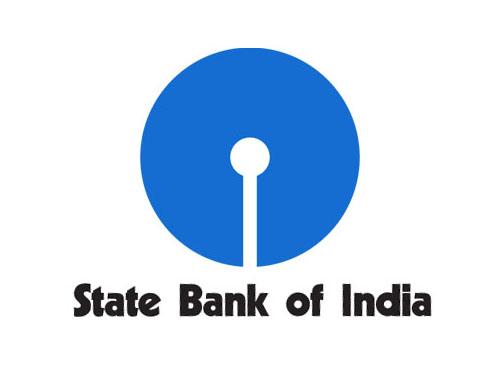IBPS CLERK MAINS 2017 – ENGLISH DAY 2
IBPS CLERK MAINS 2017 – ENGLISH DAY 2
Dear Banking Aspirants,
IBPS CLERK Mains 2017, the last exam of the year 2017 is going to held in 21.01.2018.There is only few days in our hands for preparation and you have to work hard to achieve your goal, because the competition is very high as per the vacancy is concerned.
So start your preparation now with this study Planner for IBPS Clerk Mains. It’s a 20 days complete planner with various Aptitude, Reasoning, English, Current affairs & Static Gk topics Included. There are 4 Mock tests available in this planner.
We have planned this Planner in Such a way that this will cover the entire current affairs quiz from the month of October to January (1st week). Because Banking Awareness, Current Affairs, Static Gk & Computer Awareness will play a vital role in cracking the IBPS Clerk Mains exam. Though the exam is getting tougher and tougher for each and every Year, Only consistently hard working candidates will crack the exam. So be a continuous hard worker and grab the opportunity to achieve your success.
Make hay while the sunshine!!!!!!!!!!!
So as per the planner here is content related to English.
IBPS CLERK Mains 2017 –English Day 2
ENGLISH
Time: 15 Minutes
Reading Comprehension – 2
D.1-10): Read the following passage carefully and answer the questions given below it. Certain words/phrases are given in bold to help you locate them while answering some of the questions.
The Indian rupee has turned out to be one of the best-performing currencies in the world with a gain of well over 6% against the U.S. dollar this year to date. In fact, the currency hit a two-year high of 63.60 last Wednesday, supported by strong inflows of foreign capital. Around the beginning of 2017, analysts were bearish on the rupee, predicting that it would breach the 70-mark by the end of the year. But strong capital inflow has managed to turn the tide. According to the Reserve Bank of India, foreign portfolio investors invested $15.2 billion in India’s equity and debt markets this year until the end of July. In addition, foreign direct investment in April-May doubled compared to last year. Such generous inflow of capital, of course, is in sharp contrast to 2013 when the tightening of policy by the U.S. Federal Reserve had rattled the rupee. This time around, emerging markets have escaped any such taper tantrum as the Fed’s approach towards tightening has been measured. Another major contributor to the rupee’s strength is the RBI’s hawkish stance, which has pushed down domestic retail inflation to a record low of just around 2%. This has spilled over to influence the external value of the rupee as well. Oil prices remaining stable at around the $50 mark too has helped as Indians have had to shell out fewer rupees on oil imports. This is reflected in the improved current account deficit, which stood at 0.7% of GDP in 2016-17 compared to almost 4.8% in 2012-13.Notably, worries about the impact of a strong rupee on exports have risen in tandem — particularly in sectors such as pharma and information technology. There is little doubt that an appreciating rupee will affect the competitiveness of Indian exporters. In fact, it is estimated by UBS that each 1% appreciation in the external value of the rupee causes earnings of Nifty companies to drop by 0.6%. The question, however, is whether it is sufficient reason to tinker with the value of the currency in a way that makes it expensive for Indians to import goods. After all, any protectionist action, particularly in today’s low-growth global environment where countries look to steal growth from each other, is likely to draw retaliatory action. This will not bode well for the growth prospects of India or any other country. Exporters should instead be pushed to adapt to the uncertainties of doing business across borders. And the rupee’s improving external value should be seen, at least in part, as a reflection of the improving quality of the currency. The central bank has thus clearly done well for now by not fiddling around with the value of the rupee. At the same time, it would be foolhardy to take things for granted. Going forward, tighter monetary policy in the West will invariably exert more pressure on the rupee. The RBI would then have to muster greater will to let the rupee find its natural value.
Q.1) What does the phrase “turn the tide” indicate in this passage?
a) It refers to the Indian Ocean tide.
b) To change the direction.
c) To change the position.
d) To cause a reversal in public opinion.
e) To cause a reversal in direction of events.
Q.2) Which of the following sentence is true according to the passage?
a) The Indian rupee has emerged to be one of the best-performing currencies.
b) Analysts were bearish on the rupee, anticipating that it would breach the 70-mark by the end of the year.
c) Oil prices remaining rickety at around the $50 mark too has helped.
d) Both a and b.
e) None of the above.
Q.3) Which of the following sentence is false according to the passage?
a) Foreign direct investment in April-May doubled compared to last year.
b) Importers should instead be pushed to adapt to the uncertainties of doing business across borders.
c) Increase in the external value of rupee would cause a dent in earnings of Nifty companies.
d) The central bank has thus clearly done well for now by not fiddling with the value of the rupee.
e) All are true.
Q.4) According to passage, what is foreign direct investment in April-May?
a) =~ $15.2 billion.
b) =~ $16 billion.
c) =~ $30.5 billion.
d) =~ $30.5 million.
e) None of the above.
Q.5) How did emerging markets dodge tantrum?
a) By the measuring of Fed’s approach towards tightening.
b) By the measuring of the U.S.A’s approach towards tightening.
c) As RBI’s hawkish stance has pushed down domestic retail inflation.
d) As Oil prices remain stable at around the $50 mark.
e) Not mentioned in the passage.
Q.6) Which among the following attracts retaliatory action?
a) Any protectionist action.
b) Today’s low-growth global environment.
c) Countries that are looking to steal growth from each other.
d) Indians importing goods.
e) Both B and C.
Q.7) Why would a tighter monetary policy in the West invariably exert more pressure on the rupee?
I) Austerity would be adopted by the western countries.
II) India’s growth is largely dependent on outsourcing.
III) Strong capital inflow must be managed.
a) Only I and II
b) Only II
c) Only II and III
d) All I, II and III
e) None of the above.
Q.8) Which of the following could be the best title of the passage?
a) Rupee Analytics.
b) Importance of Indian currency.
c) Raging rupee.
d) Indian currency vs other countries’ currency.
e) Revival of Indian Rupee.
Q.9) What is the meaning of the phrase “fiddling around with” in context of passage?
a) To turn around things.
b) To take the issue seriously.
c) To make small changes.
d) To make important decisions.
e) To make quick changes.
Q.10) What is the meaning of the Idiom “Shell out” in context of passage?
a) To spend certain amount of money.
b) To remove nut from a shell.
c) To disburse.
d) To extract something.
e) Cannot be determined.
Answer Key:
1) e
2) d
3) b
4) e
5) a
6) a
7) e
8) c
9) c
10) a
Click here for previous day English:
IBPS CLERK MAINS 2017 STUDY PLANNER- ENGLISH DAY 1
Click here for more Information about IBPS Clerk Exam 2017:
IBPS CLERK 2017 NOTIFICATION & EXAM DATES RELEASED
IBPS CLERK 2017 – Detailed Statewise Vacancies
IBPS Clerk 2017 – Live Session



